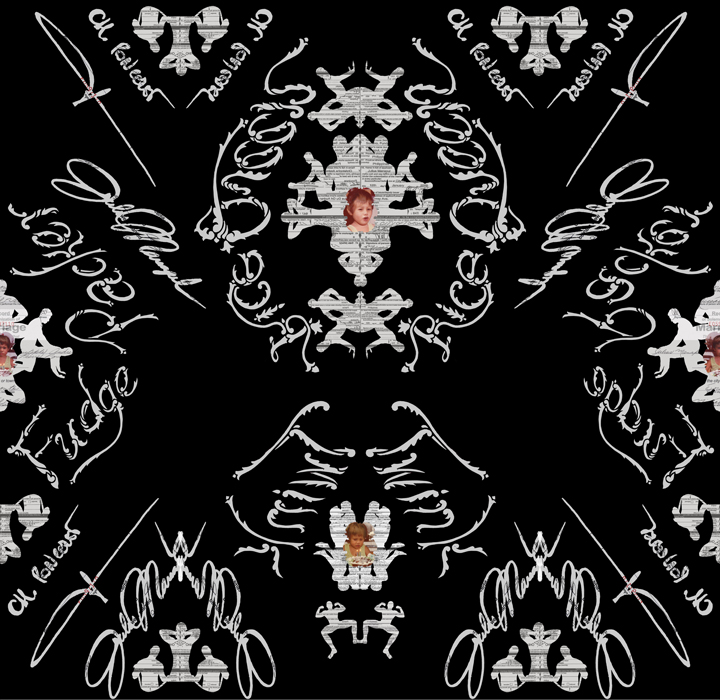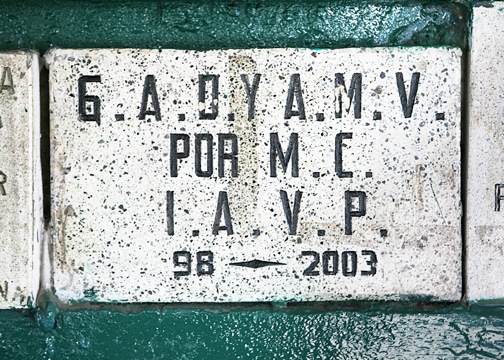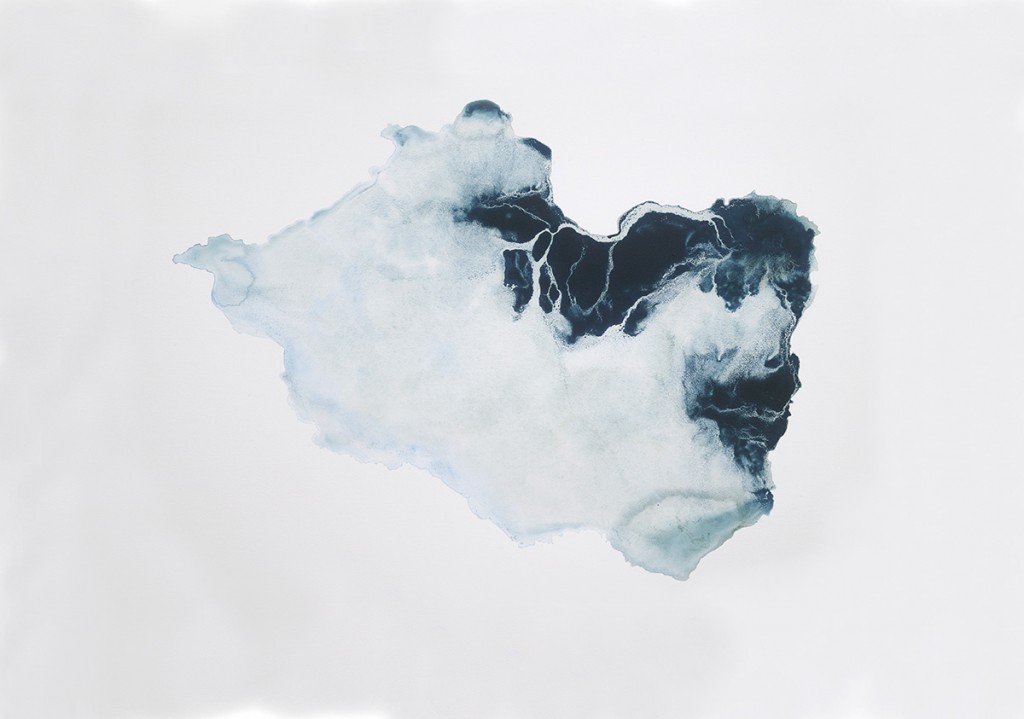2013 University of Toronto MVS Programme Graduating Exhibition
April 2 – 13, 2013
University of Toronto Art Centre
The University of Toronto Art Centre is currently exhibiting three out of four of its graduating masters of visual studies students, each of them inviting you to an alternate universe. While their subject matter is diverse, the show successfully engages the audience through different mediums, backgrounds and intentions.
The first show you are greeted with is Julius Poncelot Manapul’s questioning of queer identity through an elaborately designed domestic setting. By birthing a fictional baby parented by Christophe Poncelot, a friend or possibly a significant other, and himself, he compares growing up with gay parents with what the media identifies as a family, a man and a wife. The references to media are primarily fairy tales presenting the man-wife family dynamic for example the appearance of snow white in the looped video Kissing Utopia Goodbye which also morphs into a homosexual couple highlighting the shortcomings of the fairy tale and showing how these fairy tales almost act as an indoctrination device, introducing children solely to heterosexual couples.
 Julius Poncelet Manapul, Wallpaper Template, Digital Collage of Googled Gay Porn, Personal Pictures and Documents, 2013. Courtesy of the artist
Julius Poncelet Manapul, Wallpaper Template, Digital Collage of Googled Gay Porn, Personal Pictures and Documents, 2013. Courtesy of the artist
The entire exhibition is surreal and over the top, with exquisite furniture and chandeliers made entirely of paper or cardboard, and is inspired by Victorian design. Manapul juxtaposes this element of luxury and Victorian conservative design with the elephant in the room, homosexual erotic cut-outs. Yet another contradiction arises by contrasting an innocent baby portrait with nearly pornographic cut outs creating an uncomfortable feeling however successfully confronting and eliminating the stereotypes people have of the gay community.
The second exhibition is a political discourse on drug cartels in Mexico. Manolo Lugo unravels a political dissonance by revealing hush-hush political and economic realities. Lugo attempts this by using different documentation methods, primarily photography, and cutting crosses out of these Mexican landscapes alluding to various ominous sceneries and creating a connection with his two Malverde’s Miracles. These two works highlights untimely deaths resulting from violent encounters that arise from Mexico’s illegal drug trade epidemic.
 Manolo Lugo, “G. A. D. Y A. M. V.”, 2013, Inkjet print on paper. Courtesy of the artist.
Manolo Lugo, “G. A. D. Y A. M. V.”, 2013, Inkjet print on paper. Courtesy of the artist.
In addition, Lugo presents two videos both including limbs being tied depicting restraint to highlight again the clandestine nature of these realities and also an allusion to the way violence is used to discipline behavior. Lugo’s work, while aesthetically appealing, appears very complex despite its simplistic approach leaving a less than strong political stance with viewers.
Jessica Hein’s show is in the last room and while introducing a completely different aesthetic, it closes the exhibition quite nicely. Hein presents viewers with several ephemeral landscape oriented water works using natural material such as powdered graphite, metals and minerals. Hein lists the environment as her primary inspiration as well as the feeling of being lost. It becomes clear as you enter the exhibition and are confronted with a large work titled The Unfamiliar Appears, which appears burnt and bare, creating a feeling of emptiness and loss. Hein’s work that refers to a broad spectrum of sentiments leaves viewers with a sense of calm after the previous two collectives stroke a political nerve.
 Jessica Hein, The Light that Gets Lost SW., 2013, Mineral pigments on paper, 22×30″. Courtesy of the artist
Jessica Hein, The Light that Gets Lost SW., 2013, Mineral pigments on paper, 22×30″. Courtesy of the artist
The MVS students are successful in treading a thin line between provocative and distant and are able to keep viewers engaged. The political appears to have been in their past and continues to guide their future.
Aliya Bhatia
